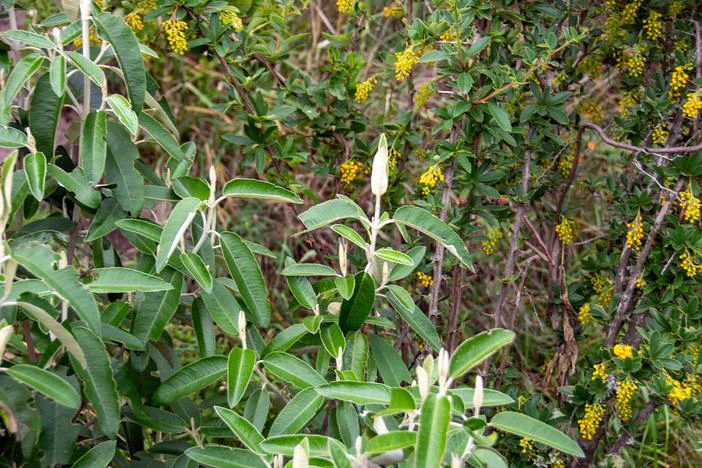(Gynoxys acostae)
(Gynoxys acostae)
/
/

Paul Asman and Jill Lenoble
CC BY 2.0
Image By:
Paul Asman and Jill Lenoble
Recorded By:
Copyright:
CC BY 2.0
Copyright Notice:
Photo by: Paul Asman and Jill Lenoble | License Type: CC BY 2.0 | License URL: https://creativecommons.org/licenses/by/2.0/ | Uploader: Paul and Jill | Publisher: Flickr

Estimated Native Range
Climate Requirements for Annapolis, Maryland
| This Plant | Your Site | Plant Suitability for Your Location | ||
|---|---|---|---|---|
| • Precipitation | 42" - 50" | 44" | Aquatic | Aquatic |
| • High Temp. | 50°F - 62°F | 87°F | Your summers may be too hot for this plant. | Too hot |
| • Low Temp. | 30°F - 41°F | 26°F | Your winter temperatures may be too cold for this plant | Too cold |
This plant should grow very well at your location but requires an aquatic environment.
Summary
Gynoxys acostae, a species of flowering plant in the Asteraceae family, is endemic to Ecuador, where it is found in the Andean highlands, specifically in subtropical or tropical moist montane forests and high-altitude shrubland known as páramo. This plant is adapted to the cool, humid conditions of its native habitat and is often found at elevations above 2,500 meters. Gynoxys acostae is a perennial herb or small shrub that can reach up to 2 meters in height. It has a distinctive appearance with its lanceolate leaves and yellow, daisy-like flowers that bloom in clusters, providing a showy display that can be quite striking in its native landscape.
In cultivation, Gynoxys acostae is not commonly found, but it could offer ornamental value for its attractive foliage and bright flowers. It would be best suited for gardens in cooler climates that can mimic its montane habitat. Gardeners interested in cultivating this species should provide it with well-draining soil, consistent moisture, and protection from hot temperatures. Due to its rarity and specialized habitat requirements, it may be more challenging to grow in lower elevations or warmer climates. As a high-altitude plant, it is likely to be sensitive to overwatering and heat stress. There is also a concern for its conservation, as it is threatened by habitat loss due to agricultural expansion and deforestation in its native range.CC BY-SA 4.0
In cultivation, Gynoxys acostae is not commonly found, but it could offer ornamental value for its attractive foliage and bright flowers. It would be best suited for gardens in cooler climates that can mimic its montane habitat. Gardeners interested in cultivating this species should provide it with well-draining soil, consistent moisture, and protection from hot temperatures. Due to its rarity and specialized habitat requirements, it may be more challenging to grow in lower elevations or warmer climates. As a high-altitude plant, it is likely to be sensitive to overwatering and heat stress. There is also a concern for its conservation, as it is threatened by habitat loss due to agricultural expansion and deforestation in its native range.CC BY-SA 4.0
Plant Description
- Plant Type: Shrub
- Height: 6-10 feet
- Width: 4-6 feet
- Growth Rate: Moderate
- Flower Color: Yellow
- Flowering Season: Spring, Summer
- Leaf Retention: Evergreen
Growth Requirements
- Sun: Full Sun, Part Shade
- Water: Medium
- Drainage: Medium
Common Uses
Bird Garden, Butterfly Garden
Natural Habitat
Andean highlands, specifically in subtropical or tropical moist montane forests and high-altitude shrubland known as páramo
Other Names
Common Names:
Scientific Names: Gynoxys acostae
GBIF Accepted Name: Gynoxys acostae